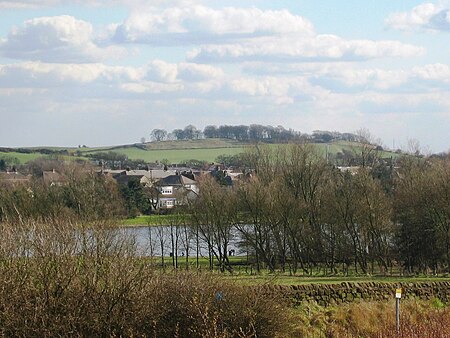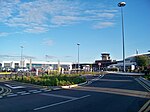Rawdon Billing

Rawdon Billing, sometimes referred to as Billing Hill, is a tree-topped hill situated in Rawdon, West Yorkshire, England. Reaching an elevation of 231 metres (758 ft), it is a significant landmark in the Aireborough area. The remains of a quarry, as well as concrete foundations for World War II defensive installations, can be found near the top. A number of local footpaths (81, 89, 90 and 91) cross the Billing or near to it, and it is possible to see many landmarks on a clear day, including York Minster, with a very good view of aircraft entering and leaving Leeds Bradford International Airport. It is owned by the Rawdon Trust, land agents for the Emmott family from Lancashire. The Billing is a popular place for local walkers and plane spotters as it overlooks Leeds Bradford Airport.In 1778, a gold torc was found on the Billing. The whereabouts of the artifact is unknown.Though sparse, there is evidence of coal on the Billing; however, though it was used previously as a quarry, there is no sign of mining. Stone from the Billing was apparently used at the base of 48 Albion Street in Leeds city centre. The former bank now houses a Starbucks.
Excerpt from the Wikipedia article Rawdon Billing (License: CC BY-SA 3.0, Authors, Images).Rawdon Billing
Billing View, Leeds Little London
Geographical coordinates (GPS) Address Nearby Places Show on map
Geographical coordinates (GPS)
| Latitude | Longitude |
|---|---|
| N 53.8541 ° | E -1.6709 ° |
Address
Billing View
LS19 6PR Leeds, Little London
England, United Kingdom
Open on Google Maps









